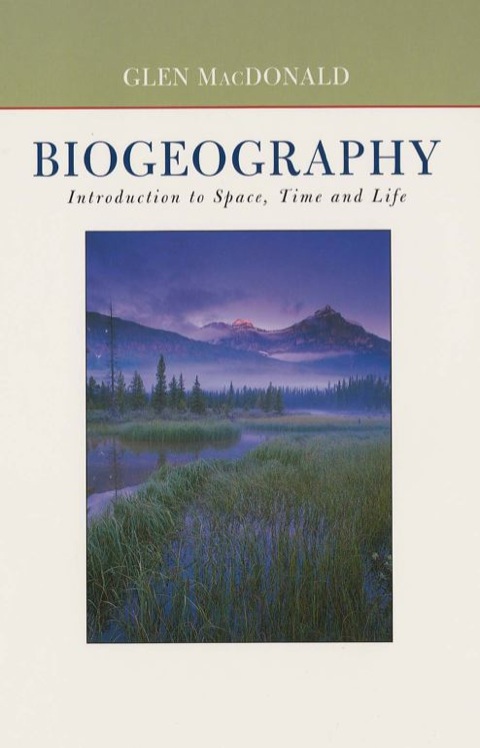Description
Efnisyfirlit
- Copyright
- Preface
- Contents
- Chapter 1: An Introduction
- Part I Space and Life
- Chapter 2: Some Basics
- Biology and the Hierarchies of Life
- Taxonomic Hierarchy
- Ecological Hierarchy
- Trophic Hierarchy
- Physical Geography and the Functioning of the Earth
- Global Climate
- Microclimate
- World Soils
- The Physical Environment of Lakes
- The Physical Environment of Oceans
- Chapter 3: The Physical Environment and the Distribution of Life
- Light
- Temperature
- Plants
- Animals
- Moisture
- Plants
- Animals
- Other Physical Factors
- Interacting Physical Controls on Geographic Distributions
- Environmental Gradients and Species’ Niches
- Chapter 4: Biological Interactions and the Distribution of Life
- Predation
- Competition
- Symbiosis: Mutualism, Commensalism, Parasitism, and Mimicry
- Combined Physical and Biological Controls on Distribution
- Biological Interactions, Gradients, and Niches
- Chapter 5: Disturbance
- Fire
- Wind
- Flooding
- Other Physical Disturbances
- Pathogens
- Marine Disturbances
- Chapter 6: Communities, Formations and Biomes
- Communities
- Plant Physiognomy, Vegetation Structure, and Formations
- Ecological Equivalents, Life Zones, and the Biomes
- Tropical Rainforest
- Tropical Seasonal Forest
- Tropical Savanna
- Desert
- The Mediterranean Biome
- Temperate Grassland
- Temperate Forests
- Temperate Rainforest
- Coniferous Boreal (Taiga) and Montane Forests
- Tundra
- Part II Time and Life
- Chapter 7: Changing Continents and Climates
- Life and the Geologic Time Scale
- Shifting Continents
- Quaternary Climatic Change
- Future Changes in Continents and Climate
- Chapter 8: Dispersal, Colonization, and Invasion
- Dispersal
- Colonization, Seasonal Migrations, and Irruptions
- Diffusion Versus Jump Dispersal
- Barriers, Corridors, Filters, Stepping Stones, and Sweepstakes
- Recent Invasions by Exotic Species
- Chapter 9: Evolution, Speciation, and Extinction
- Evolution and Speciation
- Some Basic Genetics
- Historical Development of Evolutionary Theory
- Isolation and Speciation
- The Temporal Pattern of Evolution
- Direction in Evolution
- Perfection in Evolution
- Increasing Species Diversity
- Geography and Evolution: Founder Effects, Bottlenecks, Vicariance Events, Adaptive Radiation, and Ev
- Extinction
- The Relationship Between Evolution and Extinction
- Chapter 10: Realms, Regions, and Provinces: The Biogeographic Subdivisions of the Earth
- Defining Biogeographic Realms, Regions, and Provinces
- Determining the Boundaries Between Regions
- Factors Behind the Modern Biogeographical Regions
- Evolution of the Mammals
- Evolution of the Flowering Plants
- The Modern Biogeographic Regions
- Nearctic and Palearctic Regions—The Holarctic
- Neotropical Region
- Ethiopian (African) Region
- Oriental Region
- Australian Region
- Chapter 11: Biogeography and Human Evolution
- The Primate Linkage
- Early Primates
- The Hominids: Australopithecus
- The Hominids: Early Homo
- The Hominids: Homo Sapiens
- The Geographic Expansion of Modern Humans
- Chapter 12: Humans as a Force in Evolution and Extinction
- Humans as an Evolutionary Force
- Animal and Plant Domestication
- Questions of the Origin and Spread of Agriculture
- Humans as a Force of Extinction
- Prehistoric Extinctions
- Historic Extinctions
- Part III Theory and Practice
- Chapter 13: Description and Interpretation of Biogeographic Distributions
- Mapping Biogeographic Distributions
- Biogeography of Range Size and Range Shape
- Common Biogeographical Distributional Patterns
- Endemic and Cosmopolitan Distributions Revisited
- Continuous Zonal Biogeographic Distributions
- Amphiregional Disjunct Distributions
- Dispersal Disjunctions
- Climatic Disjunctions
- Geologic Disjunctions
- Evolutionary Disjunctions
- Biogeographic Relicts
- Biogeographic Distributions and the Reconstruction of Evolutionary History
- Centers of Origin and the Dispersalist Model
- Cladistic Biogeography
- Panbiogeography and Vicariance Models
- Beyond Vicariance Biogeography: The Phylogeographic Revolution
- Chapter 14: The Geography of Biological Diversity
- What is Biological Diversity?
- How Many Different Species are there on the Earth?
- Latitudinal and Altitudinal Diversity Gradients
- Controls on Geographic Gradients of Species Diversity
- Historical Theories
- Equilibrium Theories
- Island Biogeography
- Geographic Patterns of Island Biodiversity
- The Equilibrium Theory of Island Biogeography
- The Theory of Island Biogeography Today
- Chapter 15: Biogeography and the Conservation Challenge
- The Value of Conservation
- Endangered and Threatened Species
- Biogeography and Endangered Species
- Biogeography and Conservation Planning
- General Strategies for Species Conservation and Biodiversity Conservation
- Habitat Restoration and Conservation
- The Global Warming Challenge
- Some Reflections
- Glossary
- Photo Credits
- Illustration Credits
- Index







Reviews
There are no reviews yet.